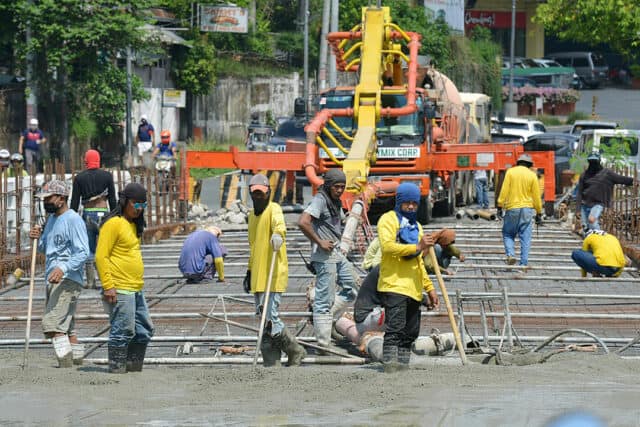
INFRASTRUCTURE SPENDING rose by an annual 4% in August as the Marcos administration ramped up the implementation of projects, the Budget department said.
The Department of Budget and Management (DBM) in a report said expenditures for infrastructure and other capital outlays increased to P73.7 billion in August, from P70.9 billion a year ago.
However, the August figure was 4.4% lower than the P77 billion spent in July.
The DBM said the government accelerated the implementation of infrastructure projects and other construction activities to meet the Department of Public Works and Highways’ spending targets for the year.
“Processing of payments for right-of-way claims nationwide also contributed to the higher infrastructure outlays in August this year,” it added.
The DBM said the growth in expenditures was partially offset by one-off payments in August 2021 for various railway projects of the Department of Transportation (DoTr), including the Metro Manila Subway project, the Malolos-Clark railway project and the Metro Rail Transit Line 3 rehabilitation project.
In the eight months to August, infrastructure spending stood at P628.6 billion, up by 10.2% from the P570.4 billion a year ago.
“Overall infrastructure spending is expected to remain positive but muted as the National Government attempts to limit the impact on the deficit and the overall debt,” ING Bank N.V. Manila Senior Economist Nicholas Antonio T. Mapa said in a Viber message.
The country’s relatively high debt-to-gross domestic product (GDP) ratio gives fiscal authorities limited space “to deliver a substantial boost in terms of spending, Mr. Mapa added.
The debt-to-GDP ratio eased to 62.1% at the end of June, lower than 63.5% as of end-March. The government is targeting to bring down the ratio to 61.8% by end-2022.
Terry L. Ridon, a public investment analyst and convenor of think tank InfraWatch PH, said it is misleading to assess growth on mere spending.
“These expenditures are non-recurring expenditures that are dependent on various government actions unrelated to funding, such as efficient right-of-way processes and determined leadership in different agencies,” he said in an e-mail.
However, Mr. Ridon said spending growth is a “promising” sign. “The government will strive to avoid delays in infrastructure implementation, unlike the previous administration’s record of massive delays in its infrastructure projects,” he added.
Ateneo de Manila University Economics professor Leonardo A. Lanzona said infrastructure is “an acceptable program for recovery if it leads to more jobs.”
“Judging from experience recently where infrastructure has been the main program for growth, this does not seem to be the case as a significant portion of the population are still feeling adverse effects of the pandemic,” he said. “It may not be wise to focus on infrastructure whose benefits are gained only in the long run, if any.” — Luisa Maria Jacinta C. Jocson
If you like this article, share it on social media by clicking any of the icons below.
Or in case you haven’t subscribed yet to our newsletter, please click SUBSCRIBE so you won’t miss the daily real estate news updates delivered right to your Inbox.
The article was originally published in Business World.







More Stories
Vista Land Celebrates 50 Years with Sandiwa: An Event Honoring Leadership, Legacy, and the Filipino Dream of Homeownership
Vista Land Celebrates Love Month in Ilocos Region
Vista Land Bridges Cebuano Heritage and Progress with Valencia by Vista Estates